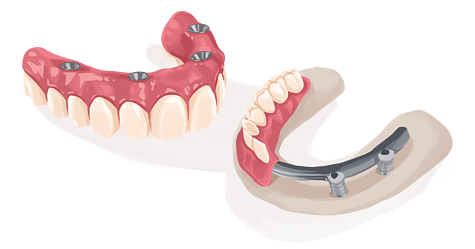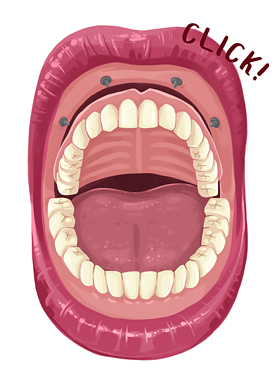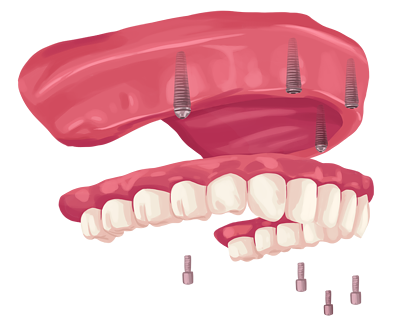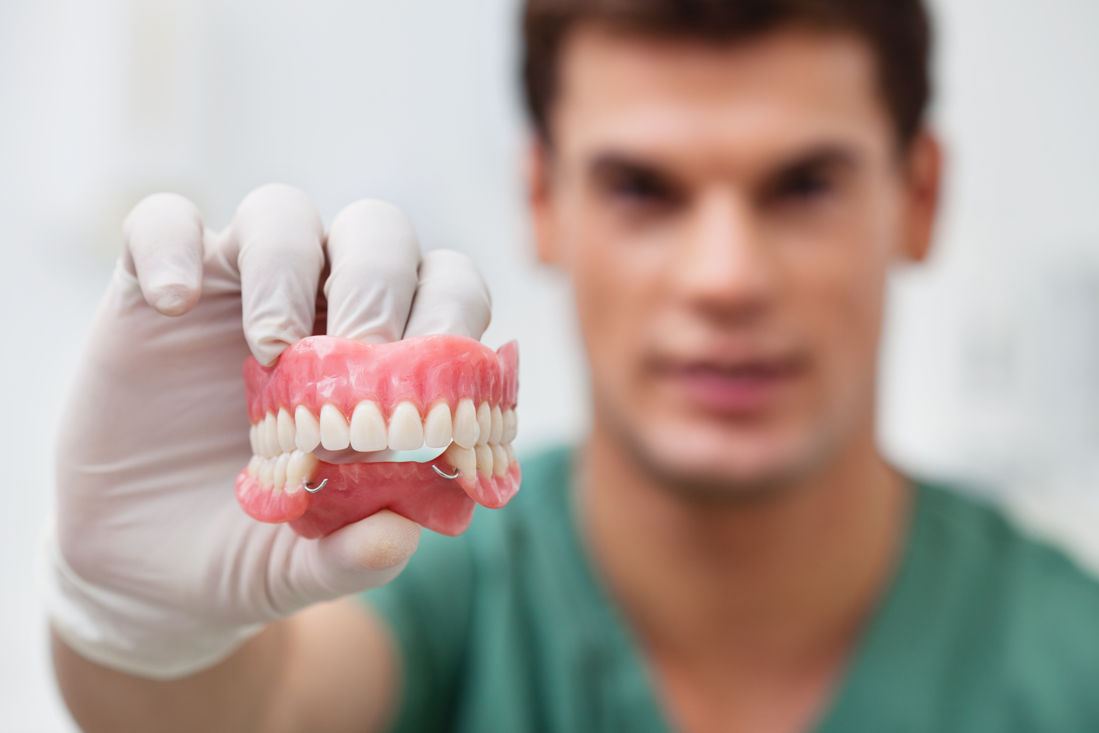How Much Do Dental Veneers Cost?
Veneers are a surefire way to cover up stained or crooked teeth. You have to be prepared, though, that a single tooth can set you back up to $1,800! And they might not last forever
The price is dependent on the state of your mouth and your location, but there are also universal factors. So which veneers make the most sense?
In this blog, we will discuss the costs about, how much do dental veneers cost and find the optimal choice for your radiant smile.
What is the cost per tooth for dental veneers?
Dental Veneers are great for discoloration and uneven teeth. Some materials address one issue better than the other. There are two main types, here’s how they compare:
- $800 per tooth
- Quite thin, little of the tooth has to be shaved down
- Last 5-7 years
- Can look fake
- Can stain, you cannot whiten them at home
- If they break, you can fix them easily at a small cost
- $1,500 per tooth
- Thick, a lot of the tooth has to be shaved down
- Last up to 20 years
- Very close to natural dentition, easy to match color
- Stain-resistant
- Very expensive to fix, you will probably need new ones
The table above represents average prices for a single tooth. You may be able to get a better deal if you’re going for more than one.
It is hard to say which type has the best price. It all depends on what you’re looking for: appearance, durability, or affordability.
What influences the dental veneers cost?
You may be thinking that prices you heard from your dentist are lower (or maybe higher) than what we have here. The prices above are based on solid research, but they are averages.
But there are numerous factors that can impact the price. The biggest one is the location, as costs can be very different from state to state. What’s more, you might even end up paying a different amount than your friend, whose dentist works in the same office.
It is also important to note that we provided numbers prior to any deductions; insurance, dental plans, or any others. It is up to your provider what they will cover, and up to your dentist what additional procedures you might need.
The total dental veneers cost includes more than just the placement
The prices above are not the only thing coming out of your wallet. There are some extra costs that you will have to take into account.
Oral examination
In order to get veneers at all, you are going to have to consult with your dentist. This means setting up an appointment with him or her to discuss your options. During this appointment, you will find out if you are a good candidate for this procedure.
X-rays and diagnostic molds
You will need at least one X-ray. The dentist needs to inspect the structure of your teeth and the surrounding tissues. Most likely this will be a whole-mouth radiograph.
Also a diagnostic cast might be made. This is a working model of what your mouth will look like after placement.
Dental cleaning
A prophy, or, dental cleaning, will most likely be necessary shortly before getting veneers. This will make sure there is no food debris or plaque on your teeth, as to avoid problems underneath veneers in the future.
Most likely you will be billed separately for all these procedures. What’s more, after getting veneers you must make sure to clean them and visit your dentist regularly. If they break or chip you have to address the issue fast before damage is done to the tooth underneath.
Does dental insurance cover dental veneers?
Insurance rarely covers dental veneers, as this is considered a cosmetic procedure. It is hard to convince policy providers to reimburse you for anything not “medically necessary”.
Even if you succeed, veneer placement and the associated costs are quite high. You are going to reach your limit very quickly. And there are still routine procedures you should be having throughout the year.
What’s more, veneers are not permanent, so there is a chance that you will have to redo them at some point. There are other solutions, like implants, which are considered the most permanent solution in restorative dentistry.
Do affordable dental veneers exist?
If you have missing teeth or need a whole arch replaced veneers might not be the best choice. A full set of veneers would set you back a lot. You may have heard of clip-on veneers, but they are nowhere near as comfortable.
Instead, consider the G4 by Golpa. It provides you with a full set of implants in twenty-four hours. There is only one payment, with no additional costs. Insurance might cover a portion of the price, especially if you are missing teeth.
The G4 is a permanent solution, which means never having to redo it. Contact us today!
When is it a good idea to get veneers?
Veneers are small pieces of lining placed on top of natural, shaved-down teeth. Upon hearing this, you may ask yourself “Do veneers ruin your teeth?”. The answer is: yes and no.
The tooth underneath remains alive and healthy. But a significant part of it does have to be filed down. And for the two most common types of veneers, composite and porcelain, the process is irreversible.
How do veneers work?
Veneers are generally a cosmetic procedure. They are recommended for teeth that are:
- discolored,
- chipped,
- worn-down,
- misaligned,
- crooked,
- irregularly shaped,
- affected by decay or disease,
- or injured in an accident.
There is no healing, as the procedure is non-surgical. You may get away with only visiting the dentist twice throughout the process. What’s more, you won’t have to go into the office more often than you did before getting them.
You are a good candidate if you don’t have missing teeth (in the place you want veneers), severe periodontal disease, or significant decay. There is a condition, though: your enamel needs to be healthy enough to support them.
What can you expect during the veneers process?
The process can turn out lengthier than you’d expect. It can take up to four weeks for the dentist to get veneers back from the lab alone. If you strategically plan out your visits with your dentist, the whole process can take about two months.
-
First dental visit
During this visit, the dentist will check the overall condition of your mouth. He or she will judge whether you are a good candidate for veneers.
-
Prophy
You might need a dental cleaning before getting veneers. Remember, they are stuck to your natural teeth, so you cannot have any plaque or food debris in your mouth.
-
Diagnostic wax-up/x-rays
Once you establish a plan of action with your dentist you will have your X-rays. A diagnostic wax-up might be made. It is a model of how your mouth will work after the procedure is complete.
-
Preparation
About half a millimeter of your tooth will be shaved down. An impression will be taken and sent off to the lab. You will have to wear temporaries before the next visit.
-
Placement
Once the veneers return from the lab your teeth will be cleaned and roughened, to make attachment easier. A special cement will be placed on your teeth. Ultraviolet light will help it harden quickly for a permanent attachment.
-
Checkup
You might have another visit with your dentist a couple of weeks later. He or she will check if the veneers are fixed to your teeth properly and whether there are no other problems.
This overview may give you a general idea. Your dentist might decide that some extra steps need to be taken, or that some stages have to be stretched out over several appointments.
What types of veneers are there?
Generally, they can be composite (made of resin) or porcelain. There is another option, a less invasive one, called Lumineers.
Some materials are more durable than others. For some, it is the appearance that is most important. There are different options, depending on what you are looking for. So, what’s the difference?
Composite
Composite veneers can be built directly on your tooth or (indirectly) in a lab. The latter take longer to install in your mouth.
In comparison with porcelain veneers, resin looks less natural and is less durable. This material stains similarly to your natural teeth and can’t be whitened).
On the plus side, composite veneers can be made very thin. This means removing less of your natural tooth’s enamel. They are also easy to fix if they were to crack or chip.
Porcelain
Porcelain is the way to go if what you’re looking for is appearance. Such veneers provide a look very close to natural teeth. What’s more, porcelain is stain-resistant, which means never having to worry about whitening.
These are also more durable than resin, however, if they crack or chip it is very expensive to repair them. They might even need to be replaced.
Lumineers
Lumineers are the only type that is reversible. They are the thinnest (about 0.2mm), which allows for shaving down a very small amount of the tooth. Their durability is comparable to that of porcelain.
The translucent quality works great to mimic enamel. The application process is pain-free and there is no need to wear temporaries. As with other types of veneers, they can be an alternative to whitening and light orthodontic treatment.
How long do veneers last?
Veneers, unlike implants, for example, are not designed to be a life-long fix free of maintenance. You can expect porcelain veneers to last around twenty years, while composite ones last around seven.
This is true, of course, provided that you take proper care of them. Generally, you should
- keep up good overall oral hygiene,
- address teeth-grinding, if that is an issue,
- not use teeth as tools, for example, to open letters,
- steer clear of coffee, wine, or tea,
- not smoke tobacco,
- and wear oral protection during sports and similar activities.
Veneers are prone to damage, as are the living teeth underneath. It is important to visit the dentist regularly after having them installed.
Pros and cons of veneers
Like with anything, there are pros and cons to veneers. They are great if you want to address cosmetic issues, however, this is only an option if your teeth are generally healthy. The cost of veneers is also something to consider.
- Allow you to keep your natural tooth
- Improve the appearance of your smile
- Procedure is non-surgical
- Low-maintenance, like natural teeth
- Easy and pain-free to install
- You must have healthy enamel
- Teeth must be shaved down
- Relatively expensive
- Prone to damage
- Won’t replace missing teeth
- Won’t fix bone loss or receding gums
- Most options are irreversible
If done well, veneers can look really great. They are not an option, however, if your teeth are damaged or missing.
Should I get veneers?
Veneers are a great solution for those with discolored or crooked teeth. But are they the best choice? There are problems that they cannot solve, such as missing teeth or bone loss.
What’s more, this solution is not life-long. They have to be replaced every few years, despite being relatively expensive.
Veneers can work if you want to fix up a single tooth. If you want to get a whole arch replaced, or if you are missing teeth, it is worth checking out the G4 by Golpa. You could have a full set of teeth in twenty-four hours!
It is a permanent solution for a beautiful smile. More often than not the G4 turns out more affordable in the long run. Schedule a consultation today.
Can You Get Dental Implants If You Have Diabetes?
If you have missing teeth and your diabetes is under control you are most likely a good candidate for dental implant placement.
Diabetes is a disorder that interferes with general health and daily life. The problems it creates include a wide array of dental issues, such as dry mouth, thrush, and, most importantly, loss of teeth.
It’s no secret that the best way to bring back a natural-looking smile is getting dental implants. So what should diabetics consider if they want to get them?
In this guide, we address the crucial factors and considerations for individuals with diabetes seeking dental implants, covering the common doubt, “Can diabetics get dental implants?” to empower informed decision-making for a confident smile restoration journey
What is diabetes?
Diabetes is a group of disorders that includes raised sugar levels in the blood. It affects the whole body, not just certain areas or organs. There are different types of diabetes, type 1 and type 2 being the most common.
In type 1 the body does not make enough insulin. In type 2 the body stops responding to it.
Symptoms include:
- being very thirsty or tired,
- urinating a lot,
- having problems with weight management,
- problems with blood circulation,
- inefficiency in fighting infection,
- slower healing and growing of bone.
These issues can be related to dental procedures, the implant process in particular.
How does diabetes affect oral health?
Those suffering from diabetes are more likely to develop gum disease and tooth decay. Dry mouth, a common issue, also means less taste sensitivity.
These issues can lead to tooth loss, and that in turn to changes in diet. The result is malnutrition, a serious problem for those who should be monitoring their diet closely.
Some issues are linked in a cause-and-effect way:
-
Difficulty in healing and fighting bacteria
-
More cavities and abscesses
-
Frequent antibiotic treatment
-
Thrush (a fungal infection in the mouth)
The fungus thrives in high-sugar environments, such as saliva of a diabetic.
Those issues can be even more problematic if conventional dentures are worn. Those can be tricky due to dry mouth and issues with bone growth (conventional dentures do not provide stimulation).
Another common problem is inflammation caused by friction between the denture and gums. If you are a diabetic with missing teeth, conventional dentures might not be the best choice for you.
You should always replace missing teeth, otherwise, your diabetes could become worse.
Should you get dental implants if you have diabetes?
Getting implants really is an idea worth considering, especially if you have diabetes, as they can help aid some of the issues inherently linked to that disorder.
The great thing about them is that they provide a great deal of stability. Conventional dentures can lead to a starchy, soft menu.
If you have diabetes, you are probably more conscious of your diet than the average person and know this could make the problem worse. Dental implants enable you to bite and chew more comfortably.
They also stimulate the bone and prevent loss. In order to get implants installed the bone has to be thick enough. If it isn’t, the patient must undergo bone grafting. Provided your diabetes is well-controlled, this procedure is as safe as for other patients.
Remember that, at least for the duration of the process, you must stop smoking, if you do at all. Smoking is always a contraindication to implant placement.
- Enable a varied diet
- Stable and comfortable in the mouth
- Prevent loss of bone
- Less inflammation and smaller risk of infection than regular dentures
- Control over diabetes is vital
- You have to undergo antibiotic treatment
- Cannot be a smoker
Implant success rates in diabetic patients
When considering tooth replacement you may ask yourself: are dental implants safe for diabetics?
Yes, they absolutely can be. If diabetes is under metabolic control, it is not a contraindication.
Researches have shown that the rate of dental implant survival in diabetic patients is similar to that of healthy patients (up to 95%). One of these studies presents a wide review of many cases. These include both type 1 and type 2 diabetes.
On the other hand, if your diabetes is poorly controlled you might have issues with impaired osseointegration . This means implants will not fuse well with the bone. During the first year, this process is slower in diabetic patients. There is no difference after this period, even with increased HbA1c values.
You may also have heard of peri-implantitis, an inflammatory process connected to dental implantation. It involves loss of bone and inflamed soft tissue. It is not inherently linked to diabetic patients, but it is a possibility with elevated HbA1c values (over 7%).
The general rule of thumb is that the smaller the amount of implants, the better. Implants are less likely to fail if the bone is not as manipulated.
Do diabetics have to take extra steps when getting dental implants?
If you are interested in getting dental implants, you should be aware of the considerations that affect you as a diabetic. First of all, you should inform your dentist about several things:
- the type of diabetes you have,
- the medication you are taking,
- and your general lifestyle.
Prior to surgery, you will have to make sure your sugar levels are good. If they are not, you should postpone any dental procedures other than acute infections such as abscesses.
The most common solution for patients with diabetes is the All-On-Four method, which includes implant placement.
If you are reluctant we may have an even better solution for you.
Try G4 even if others refuse
The G4 by Mike Golpa is a technique very similar to the Ao4 method. The biggest difference is time. The G4 provides you with a full set of implants in 24 hours whereas the all-on-four can take months.
Each candidate has individual needs and circumstances. Dental experts at Golpa will assess what the best choice is for you. They might recommend the perfect solution even if you had no luck finding it elsewhere. Consult with us today!
How Much Do Snap-In Denture Implants Cost?
Do you feel like laughing, coughing, or sneezing have become a challenge since replacing your natural teeth? It can turn out to be a challenge to find a comfortable yet reasonably-priced alternative to conventional dentures.
Are snap-in dentures implants and cost considered as the most affordable solution when you want to replace missing teeth?
What are snap-in dentures?
Snap-in dentures combine the advantages of dental implants and conventional dentures. They are sometimes called implant-supported dentures or overdentures and are a more permanent alternative.
The denture is supported by metal posts implanted in the jawbone and not just by the gums. Bone grows around the implants that stimulate it and prevent loss (a common problem with tooth-replacement). This means saving more money, since you don’t have to make replacements as often.
Overdentures provide the user with 40-50% of their chewing ability (compared to natural teeth). They are reported to last five to ten years.
Are snap-in dentures for you?
Overdentures were designed for those who are missing teeth or are suffering from tooth decay, but they might not be the right choice for everyone.
The jawbone must be fully developed, as there must be enough bone to facilitate the implant. It is recommended for adults and seniors.
Candidates must present good overall oral health. They must also be non-smokers, as cigarettes increase the risk of failure.
If the implant fails it can be redone, however this is not usually recommended. The success rate of 95% applies to first-time implants only. It might be more advisable to choose a different type of denture.
Pros and cons of snap-in dentures
If you are considering this procedure you should be aware of the common problems with dentures reported in patient reviews.
Snap-in dentures do not trigger the gag reflex and will not slip out by themselves, but they do require regular maintenance, nightly removal, and cleaning. They do not cover the roof of the mouth, allowing for more taste sensitivity.
They can prevent bone loss, but they require a surgical procedure. The process may take up to six months.
While snap in denture implants are more cost effective than regular dentures, they can still turn out to be pretty expensive.
- More stable and easier to speak with than conventional dentures
- Won’t slip out while you eat, drink, or sneeze
- Do not trigger the gag reflex
- Stimulate bone growth and prevent loss
- Must be taken out, cleaned, and stored
- Involve a surgical procedure
- The process may take around six months
What does the snap-in-denture procedure involve?
The process can last up to six months. It involves surgical procedures and multiple visits to the dentist. Here is a general overview of what you might expect:
-
Initial consultation
The dentist takes X-rays of the mouth to determine the state of the bone and the location of the sinuses (air-filled spaces in the skull). Impressions of teeth and gums along with a 3D model of the mouth are then made. A mock-up of the denture is forged.
-
Treatment plan
It may turn out that some teeth need to be extracted in order to make room for the overdenture. A plan will be made according to individual needs of the patient.
-
Bone grafting
The patient may require bone grafting if the existing bone cannot accommodate the implants. It can take four to twelve months to fully heal from this procedure.
-
Dental implant placement
Titanium rods are inserted in the front of the mouth (there tends to be more bone in the front than in the back) while the patient is sedated. Bone will then grow around the implants during a period of up to six months. Temporary dentures can ease the discomfort at this time.
-
Fitting the snap-in denture
The snap-in denture is modeled after the temporary one and can be magnetically attached to the rods protruding from the gums.
Each patient has their own unique situation. This may influence the general procedure.
How much are snap-in denture implants cost?
The overall cost of the overdenture relies mainly on how many implants are necessary. The dentist will assess the needs of each patient.
The location of the dental office also plays a role. Some patients choose to travel in order to find more economical prices outside of the US. The experience of the person carrying out the procedure and whether it is a surgeon will also influence the price.
Bearing all this in mind the costs of snap-in dentures range from $12,000 to $40,000.
Are snap-in dentures the same as All-on-4?
Snap-in dentures are easy to confuse with the All-on-Four method. These procedures require multiple visits, sometimes to multiple doctors, and months of healing. They require the patient to wear temporary teeth. They are, however, not the same thing.
With All-on-Four the patient does not remove the teeth on a day-to-day basis, as they are attached permanently. A fixed bridge supports the teeth on four titanium rods. The average cost for a full mouth is reported to be ranging from $49,000 to $120,000. This is considerably more than the cost of snap-in dentures.
The All-on Four is a low-maintenance, relatively permanent solution. All-on-Four teeth should be cared for as if they were natural. Snap-in dentures require more attention, but can be more cost-effective.
The All-on-Four method may require more implants, but both solutions involve surgical procedures.
All-on-Four is a procedure that takes one to two years, while snap-in dentures take up to six months to install in the mouth fully. The G4 by Golpa is a method that encompasses the advantages of these techniques. It remains the most affordable and time-efficient option.
Choose the best possible option
Our team along with Dr. Golpa have perfected the All-on-4 and snap-in denture procedures. They extracted the advantages to create the best solution; the G4 by Golpa. It provides the patient with 90% of their chewing ability and eliminates the need for taking the teeth out. You can brush them like natural teeth!
The whole procedure takes place in twenty-four hours in one location. It is performed by doctors specialized in this particular method. By limiting the visit to just one there is no room for hidden fees; prices start at $16,500.
Choose the best possible option and schedule a consultation or chat with one of our consultants.
What Should I Expect When Getting Immediate Dentures?
Teeth are one of the most important features of the face. Without them it is hard to speak, eat, and you may feel weird around company. With immediate dentures there is no need to function without any teeth, even right after surgery.
While it may not be a permanent solution, it is an option in-between visits to the dentist. So what are immediate dentures? How are they different from traditional dentures?
In this article, we will cover the question, “what to expect when getting immediate dentures?” to guide you through this transitional phase with confidence.
What are immediate dentures?
Dentures are the most common restoration for those who have to have all their teeth removed.
A conventional denture is made when all teeth are already missing. If you still have teeth, you must wait 6 to 9 weeks after extractions before making a conventional denture. This allows time for your gums and the bone of your jaw to heal and reshape.
Most people don’t want to go without teeth for that long. This is where immediate dentures are useful.
An immediate denture is made before extractions are done. It is placed in the mouth immediately after surgery. This allows you to go home with a full set of teeth the same day the others are removed.
Immediate dentures are designed to fit your gums the way they look while the teeth are still there. After the extractions, the gums and bone heal under the denture and change shape. Over time the dentures will not fit tightly any more and will have to be relined.
- Can replace teeth the same day as surgery
- Controls swelling and guides healing
- Never have to go without teeth
- Looks good and functions well
- Must be relined multiple times
- May need to be replaced after healing
- May slip or move
- Lasts at most 5-7 years
Immediate denture steps
As the name of this denture suggests, you will get them immediately. There are a few steps which must be taken to lead you there, however.
-
Initial consultation
The first thing you’ll do is meet with the dentist for the initial consultation. First, they’ll do a dental exam (which may include an X-ray and/or teeth impressions) to get a good idea of what they’ll be working with. Next, your dentist will come up with a treatment plan that includes the procedure steps, the timeframe for all of it, and what recovery will look like. If they think a bone graft is necessary, they’ll discuss that with you too.
-
Bone grafting
If you do need a bone graft, it could take 4-12 months after the graft before your jaw is ready and healed enough for the implants.
-
Treatment plan
The first appointment will be for diagnosis and treatment planning. X-rays will be taken of your jaws and any remaining teeth. The dentist should do a thorough cancer screening and exam of your mouth.
-
Taking impressions
Next you will have impressions of your mouth made. This involves putting a soft putty in a tray into your mouth. The putty sets into a rubber-like consistency and makes a perfect mold of your mouth.
-
Creating dentures
Then a bite relation record will be taken. This is a similar material, but just a small amount is used to show how your top and bottom teeth fit together. These records will be sent to a dental laboratory and used to create a custom denture.
-
Tooth extraction
At your next visit, you’ll have your tooth extractions done. Your mouth will be thoroughly numbed and the teeth will be removed.
-
Dentures placement
Immediately after surgery, your new dentures will be placed into your mouth. These not only serve as your new teeth, but also to cover the extraction sites and minimize swelling.
After the whole procedure, the dentist will give you an appropriate prescription for pain and send you home to recuperate.
What should you expect during your recovery period?
You should leave your new denture in place for the next 24-48 hours. This guides the healing of your mouth and prevents swelling. If you take them out, you may not be able to get them back in!
You should become familiar with what you can expect afterwards. So here is a list of necessary steps to take during the recovery period.
Dentist check-up
You’ll likely return to the dentist after a day or two. They will remove your denture and make sure everything is healing properly. This also gives them the opportunity to make adjustments to the dentures and treat any sore spots.
After this appointment, the denture should be worn all day but taken out each night. Clean your dentures and put them in an overnight soak.
This allows your gums to breathe and prevents fungal infections. These are some essential steps in how to take care of your dentures.
Denture adjustment
As time goes by, you’ll likely get more sore spots that will need adjustment. Your bite may also be adjusted to make it more comfortable.
These adjustments should only be done by the dentist. Never try grinding or carving on your denture at home! It may break or be messed up to the point you have to buy a new one!
You may also have tiny bone fragments work their way out of your gums. This is fairly common when you have many teeth taken out at once. Your dentist can remove these bone chips easily.
Denture reline
Your denture will likely become loose over time. This is due to the healing and reshaping of your jaws. As the bone reshapes, you will need to have relines done.
During a reline procedure, a soft material is mixed and placed inside your denture. The dentist will then put it inside the mouth where it will stay while the material sets.
The reline material fills in any space created by shrinking gums. It improves the fit and makes the denture more comfortable to wear. It is common to do 3 or 4 of these temporary soft relines.
After 6-9 weeks, your healing should be complete. A final hard reline can then be done. This reline is often sent to a dental laboratory and should last for a long time.
Immediate dentures cost
Immediate dentures usually cost slightly more than a traditional denture due to the procedure being more complicated. You also have the added costs of tooth extractions and relines.
Expect to pay:
| Procedure |
Cost |
| Immediate dentures |
$1500-$3200 per arch |
| Non-surgical extraction |
$75-$150 per tooth |
| Surgical extraction |
$200-$400 per tooth |
| Denture reline |
$200-$500 per arch |
The relines of an immediate denture may be included in the price of an immediate denture or may be charged separately. Check with your dentist so you know what to expect.
Additionally, you may need surgical procedures to reshape your bone. Large knots or bumps on the jaw must be removed in order to be able to wear a denture.
Normally, expected costs will be discussed prior to any treatment being done. This allows you to be prepared and make arrangements for payment. Payment plans or financing options are available at many dental offices.
Are immediate dentures permanent?
A quality, custom made immediate denture may last as long as a traditional denture once it has a final hard reline inside. Sometimes, however, the changes to your mouth are too significant and it is better to replace the immediate denture with a conventional one.
No denture is permanent, however. Even the best of dentures only last 5-7 years before needing to be replaced. This is one of several problems to consider when choosing between dentures and other restorations.
Instead of immediate dentures, you may want to consider the G4 Implant Solution. This revolutionary procedure can replace your bad teeth with permanent, beautiful fixed bridges that can last a lifetime. And it can all be done in one 24 hour period!
Click here to find out more about this remarkable alternative to immediate dentures!
How to Decide Between Dental Bridge or an Implant?
There are several options when it comes to replacing missing teeth. Removable appliances are often less expensive but come in and out of your mouth. Fixed restorations, like bridges or implants, remain in your mouth and feel more like natural teeth.
So, what’s the difference between a dental bridge and an implant? And which is the right choice for you? Read on to find out.
How do the both procedures look like?
Dental bridges attach to natural teeth on either side of the missing tooth. This “bridges” the gap and hangs an artificial tooth above the gum tissue.
-
An impression of the mouth is first taken. This is used later to make a temporary bridge.
-
After numbing, the teeth next to the space are shaped for the anchoring crowns, called abutments.
-
An impression of the prepared teeth is then taken to send to the dental laboratory.
-
A temporary bridge is made out of dental acrylic to wear while the permanent restorations are made. This may take a week to two weeks.
-
Once complete, the temporary bridge is removed and the permanent bridge can be cemented in place.
Dental bridges look great and only take a few weeks to complete. On the other hand, additional healthy teeth must be cut down for crowns. Bridges are also notorious for trapping food underneath.
Dental implants attach to the bone of the jaw instead of adjacent teeth, just like a natural tooth root. This allows for a great looking tooth replacement without having to damage other teeth. But a dental implant procedure requires surgery.
-
An impression of the mouth is first taken. This is used later to make a temporary bridge.
-
After numbing, the teeth next to the space are shaped for the anchoring crowns, called abutments.
-
An impression of the prepared teeth is then taken to send to the dental laboratory.
-
A temporary bridge is made out of dental acrylic to wear while the permanent restorations are made. This may take a week to two weeks.
-
Once complete, the temporary bridge is removed and the permanent bridge can be cemented in place.
Which option looks better between dental implant vs bridges?
Both dental bridges and implants can look very natural! They are both topped with custom, laboratory-made crowns covered with porcelain. The main differences are the gum line and the spaces between teeth.
Dental bridges can sometimes have a gap underneath them, between the bridge and gums. This affects the natural appearance and can also act as a food trap.
It’s also sometimes obvious that the teeth on a bridge are all connected together.
Dental implants are attached to the gums, so there is no space like in a bridge. Occasionally, however, the metal implant can appear as a dark spot on the gums.
Which restoration is more durable between dental implant vs bridges??
Dental bridges and dental implants are both cemented in place. Unlike dentures or partials, these restorations do not move when you talk or eat.
A dental bridge sits on natural teeth. Over time, these teeth may decay or have bone loss around them.
The shape of a natural tooth under a crown may not hold the crown very well either. You are dependant on the dental cement to hold the bridge in place.
Because of these factors, dental bridges usually last 5-7 years on average.
A dental implant is fused to the bone. The abutment head that is under the crown is machined to hold onto crowns very well. And these metal abutments cannot decay like natural teeth.
A dental implant can often last a lifetime.
How to take care of dental implants and bridges?
Taking care of dental implants and bridges is mainly a matter of keeping them clean.
Implants can’t decay, but they can still get gum disease. Keeping the area clean can keep bone levels healthy and implants solid for many years.
Bridges must also be kept clean. It is a little more difficult due to the fact that bridge teeth are fused together. You cannot floss between the teeth.
This is in addition to the fact that bridges tend to trap food underneath them. Special floss threaders or a water flosser may help keep it clean. Otherwise, you risk bone loss and decayed tooth roots.
What about the costs of dental implants and bridges?
Depending on the number of teeth being replaced, the cost of a bridge can be similar to the cost of dental implants. A single implant and crown is about the same price as three crowns needed for a bridge, $5,000 on average.
So, which option is better choice?
Both dental implants and dental bridges are fixed, stable and natural-looking options for teeth restoration. The cost of restoring a single tooth is also comparable.
To summarize differences between them, let’s take a look at the table below:
- No surgery required
- Sits on natural teeth
- Lasts only 5-7 years on average
- Have to cut down adjacent teeth
- Can sometimes have a gap between the bridge and gums
- Requires surgery
- Fuses to bone
- May last a lifetime
- Conserves adjacent teeth
- Metal may show through gums
For replacing multiple teeth use a mix of both solutions
We have discussed replacing a single tooth, but what about multiple teeth. Or all teeth?
Bridges over implants do not have the same issues as on natural teeth. Implant bridges take advantage of both restorations and have a long history of success.
Full arches of teeth can be replaced with as few as four implants and a fixed bridge.
In general, teeth replaced with implants will have fewer issues over time than a long bridge on natural teeth. Natural teeth as anchors simply have more things that can go wrong.
The best example of this is the G4 Implant Solution. Dr. Golpa has perfected the art of full mouth implant placement.
The G4 procedure can replace an entire mouth of teeth with beautiful, fixed implant bridges in just one 24 hour period. Visit our website today to find out if the G4 Implant Solution is right for you!
How Safe Are Dental Implants?
Dental implants have many advantages over other ways of replacing missing teeth. Even so, there are still things to think about before choosing to do implants.
Let’s look at what you need to be aware of and how to prevent bad outcomes from implants.
In this guide, we delve into the considerations for the safety and success of dental implants, addressing the vital question, Are dental implants safe? to empower you with informed choices for your oral health journey.
Dental implants benefits
Dental implants are considered the closest thing to having natural teeth. They look good, are comfortable, and function well when chewing and talking. Here are some of the reasons implants have such a good reputation:
High success rate
Dental implants are one of the most reliable restorations in dentistry, with an over 95% success rate. In most situations, dental implants work well without any significant issues.
Stability
Implants have such a high rate of success because they actually fuse to the bone and anchor in place. This makes them much more stable than removable dentures that rest on the gums. Patients usually find teeth implants much easier to eat and talk with than conventional dentures.
Conservative
Traditional bridges require cutting down adjacent teeth to act as anchors for missing teeth. Since implants are instead anchored in bone, much like natural tooth roots, adjacent teeth can be preserved.
Maintains bone
Without teeth, the bone of the jaw slowly absorbs back into the body. This leads to bone that is thin and fragile. Dental implants act like natural teeth to stimulate and maintain bone in the jaw.
Long lasting
Since they are most often made of titanium metal, implants do not get cavities or decay. They fuse so securely to the bone that they do not normally come loose. As a result, dental implants can often last a lifetime.
Cost efficient
Additionally, dental implants are very cost efficient. Although they usually cost more on the front end, they usually don’t have to be replaced every 5-10 years like other types of teeth replacement.
Dental implants problems
Although dental implants can seem like an ideal restoration for replacing teeth, there are some risks involved. These complications are rare, but they do happen occasionally.
Infection
Implant placement may involve several surgeries. Any time a surgical site is open, there is the chance of bacteria getting somewhere it shouldn’t. An infected implant may have swelling or a bump on the gums, or it may only be seen as a dark spot on x-rays.
Rejection
Occasionally implants will not fuse to the bone. This may be due to infection, auto-immune disorders, or other issues. In these cases, the implant may come loose from the jaw.
Placement issues
If an implant is not placed correctly, there may be damage to nerves or blood vessels. It may also result in damage to the sinus cavities or perforations through the bony walls of the jaw. 3D images and surgical guides have made implant placement much safer and predictable.
Gum disease
Although implants cannot get decay, they are still subject to periodontal disease and bone loss. Gum tissue may shrink back to expose the metal of the implant. The bone around the implant may also be lost. Bone loss is the most common way that implants fail.
Fracture
Titanium implants are extremely strong, but so are your jaw muscles. If you are prone to clenching or grinding, you can actually break an implant. You might also fracture the bridge or denture on top of the implant.
Dental Implant Risk factors
Some conditions increase the risk of implant failure.
Patients with untreated decay, poor oral hygiene, or gum disease should have those issues treated before implant placement.
Smokers and people with uncontrolled diabetes have a decreased ability to heal. Implants may take longer to integrate and surgical sites may be more prone to issues.
Patients who have been without teeth for a while often have decreased amounts of bone in the jaw. Additional procedures like sinus lift surgery or bone grafting may be needed to place an implant.
How can you improve your chances of success?
There are several things you can do to help your implant placement be successful:
- Be focused on having good oral hygiene before and after your surgery. A cleaner mouth means lower chances of infection or gum disease issues later on.
- Let your doctor know if you clench or grind your teeth. It may affect how they design your implant restoration.
- Work with your healthcare provider to get your diabetes under control. They can also help you stop smoking with cessation programs and medications.
- One of the most critical steps you can take is choosing the right doctor to place your implants. Be sure you pick an experienced dentist that has done many implant placement procedures.
An experienced implant dentist like those at G4 by Golpa has placed hundreds of implants and will know how to best plan your case. Our doctors have perfected the same day implants procedure, allowing you to get a full mouth of new teeth in a single 24 hour period.
Contact us to learn more about how G4 By Golpa can help you get your smile back!
Why Do Dentures Need a Reline?
Over time, your jaw may change and dentures may not fit as well as they originally did. This can create a lot of issues with your mouth. So what is the solution?
In this guide, we explore the key to resolving denture fit problems, shedding light on the process of how to reline dentures for a comfortable, what they do, types of relines and snug fit ensuring optimal oral health and functionality.
Changing bone
When teeth are first removed, it leaves holes in the bone where the roots of the teeth once were. These holes, called extraction sockets, fill in as healing occurs.
The bone of the jaw gradually reshapes over time while healing. Most changes happen in the first four to six months after tooth removal.
Small changes can continue to occur for years more. Tooth roots normally stimulate bone and keep it dense and strong.
Once teeth are removed, the bone is absorbed by your body. Jaws with no teeth can become smaller and more fragile over time.
What do relines do?
There is no way to predict how your jaws will reshape as the bone heals. If you need teeth removed, dentures are usually made to fit your jaw as it is now.
As your jaws change over time, the dentures will become loose. Relines are made to fill in the space left under your denture as bone is absorbed.
A good fit is needed with dentures to make them stable. It also prevents sore spots, fungal infections, and gum tissue overgrowth.
Dentures may need to be relined several times when you first get them. Even if you have been without teeth for years, relines may be needed as changes occur. To find out more about dentures, click here.
Types of relines
There are several kinds of relines available. Which type you should get depends on your individual needs.
Temporary reline
A temporary reline is usually done when significant changes are expected. This is a soft, rubber-like material your dentist can do in his office.
Temporary relines are often placed soon after tooth extractions with an immediate denture. They are also used when the gums are irritated or swollen from poorly fitting dentures.
These relines don’t last long and will need to be replaced with another more permanent reline once the jaws have had time to heal.
Soft reline
A soft reline is used when a patient gets frequent sore spots or wants a more cushioned feel to their denture. It is soft like a temporary reline but is made to be much tougher and longer lasting.
Although they last longer than a temporary, soft relines don’t last forever. Expect to replace a soft reline every one to two years.
Hard reline
A hard reline is made from essentially the same material as the body of a denture. It is a hard acrylic and will last for many years.
A hard reline is done if the patient is tolerating dentures well. They aren’t as cushioning as a soft reline but their long life and durability make them a good choice for most people.
How often should you reline denture?
You should reline a denture when it begins to feel loose or previous relines begin to wear out. Wearing a denture that does not fit snuggly can create many common problems, including sore places, infections, or puffy, overgrown gums.
Expect a temporary reline to wear out every few weeks and a soft reline about every one to two years. A hard reline done at a dental laboratory will last for years, but you still may need to replace it due to bone changes.
If bone changes are substantial or the teeth become too worn, it may be time to get a whole new denture.
How to reline denture?
Relines are best done at your dentist’s office, but an at-home kit is an option if cost or access to a dentist is an issue.
Professional denture reline
Both kind of professional denture reline, soft and hard, are done differently.
- Your denture is roughened on the inside and an adhesive is placed on the acrylic.
- The soft reline material is placed into the denture and it is seated in your mouth to cure.
- Once it has stiffened, the denture is removed and trimmed.
- An impression of your jaw is taken inside your denture.
- The whole denture is then sent off to a dental laboratory to have the durable reline material placed.
- Usually, the denture can be returned to the patient the next day.
DIY denture reline kit
If cost or ability to get to a dentist are an issue, there is a do-it-yourself kit available at many drug stores. These work similarly to the soft relines mentioned above.
Be advised that these kits do not last very long and must be done correctly. If the denture is not seated precisely, you may create more problems than you solve.
Denture reline cost
Many people get dentures thinking it is the last dental treatment they will need. They are unaware than dentures need relines, eventual replacement, and may have other additional costs involved.
A soft reline done in the dental office only takes one visit and may cost $300-$400. A laboratory reline means being without your denture for one night and costs around $500, but will generally last much longer.
| Reline type |
Cost |
| Soft reline |
$300-$400 |
| Hard reline |
$500 |
Can you avoid denture reline?
Most relines are needed because the bone of the jaw is no longer stimulated by teeth. That is why it is worth to consider other teeth replacement options.
Dental implants are seen as a better way to replace teeth. They are great anchors for making stable teeth replacements. They also provide stimulation to the jaw to prevent bone loss.
Implants can be used to create dentures that snap into place. While more stable, these dentures do still come in and out of the mouth. They also need regular maintenance on the attachment points and will have to be replaced every five years or so, much like traditional dentures.
An alternative is the G4 by Mike Golpa. This revolutionary treatment option features permanent bridges supported by just four dental implants. They are beautiful, stay in like natural teeth, and can usually be placed in just one 24 hour period!
And since the implants help maintain the bone, the only reline that is normally needed occurs six months after any teeth are removed. This helps prevent food from getting trapped under the bridges.
Once complete, G4 restorations only require normal cleanings and checkups to maintain them for a lifetime!
Types of Dental Bridges: Pros, Cons and Cost
If you’re looking into getting a dental bridge, you may already know about all the different kinds. Whether you do or not, this article will take you through an overview of each, their pros and cons, and what they cost.
Ready to learn about the types of dental bridges available?
So which bridge will you cross?
1 – Traditional dental bridge
A traditional dental bridge is the most common type of bridge people get. They have as few as one tooth and attach to the prosthesis. The whole contraption attaches to your surrounding natural teeth via abutments, which are cemented to the natural teeth.
So if you have natural teeth on both sides of the gap that needs a fake tooth, you can get a traditional bridge.
A traditional bridge usually costs between $2,000 and $5,000, which includes the prosthesis with a crown per abutment tooth.
- Very popular and reliable dental prosthesis
- Works well in most patient cases
- Comparatively affordable
- The dentist will need to remove the enamel of the supporting teeth to place the crowns over top of them
- The removed enamel will never grow back, so once you get a traditional bridge, you’ll always have to have a bridge
2 – Cantilever dental bridge
Cantilever bridges are similar to traditional bridges, the main difference being that the prosthesis is supported by just one abutment on just one side of the mouth.
So if you have just one natural tooth next to the gap left by a missing tooth, you can get a cantilever bridge.
But like traditional bridges, the dentist will need to remove enamel to prepare the supporting tooth.
A cantilever bridge costs between $2,000 and $5,000, which includes the prosthesis with a crown per abutment tooth.
- Works if only one tooth is next to the gap left by a missing tooth
- Most affordable type of dental bridge
- The dentist will need to remove the enamel of the supporting tooth to place the crown over top of them
- Because it attaches to just one tooth, it can more easily lead to a fractured tooth or loose crown
3 – Maryland dental bridge
If you’re looking for a more conservative option to a traditional bridge, you can go with a Maryland dental bridge. It is a good choice for replacing the missing front tooth.
This bridge is held in place by a framework (two wings), usually made of porcelain or metal. The framework is attached to the back of the two teeth next to the gap. But there is the one condition – these teeth must be healthy, with no cavity.
A Maryland bridge can cost between $1,500 and $2,500, including the prosthesis with the framework/wings that attaches to the abutment teeth.
- Because the framework is bonded to the teeth, the dentist doesn’t need to remove enamel
- A more conservative option to a traditional bridge
- May not be as strong as a traditional bridge
- The framework may get in the way of your bite or gums
4 – Implant-supported dental bridge
The last option we’ll cover is an implant-support bridge. This is a good option for people who have more than just one tooth missing. Instead of using surrounding teeth as support, this bridge is supported by dental implants.
Usually there’s one implant per missing tooth, but if that’s not possible, it can use two implant-supported crowns.
An implant-supported bridge can cost anywhere from $5,000 to $6,000 for two implants covering 3-4 teeth.
- Feels very sturdy because it’s supported by implants
- Many times does not require removing any enamel
- Can choose a removable bridge or a fixed bridge
- Requires two surgeries — one to place the implants and the one to place the bridge
- Can be very expensive, the most expensive bridge on this list
Is it possible to get a bridge for full mouth replacement?
Here’s the thing: if you have multiple missing teeth and you want a truly permanent solution, these options may not be exactly what you need.
The best type of bridge for you may very well be the G4 implant procedure. It’s an upgraded and improved version of the All-On-4 solution. Dr. Golpa is the brains behind the G4 solution and has since done the procedure over 5,000 times.
G4 offers a dental bridge supported by four implants and it’s placed in just one day. So it’s both durable, reliable, and done quickly. It’s a full-mouth replacement done in a day that will last many, many more days.
Common Denture Problems and How to Deal with Them?
Dentures and problems just go together. As good as a set of fake teeth are, they, like anything else, is going to have issues.
So what are the most common denture issues? And how can you deal with them?
In this guide, we’ll learn about the common dentures problems how to solve them, offering insights into prevalent challenges and providing practical solutions to ensure a seamless denture-wearing experience.
What are the most common denture problems?
If you’ve ever experienced one of these common denture problems, you’re not alone. These are the most common issues denture wearers experience.
Dentures slipping
Sometimes you may feel your dentures slipping or shifting. Usually it happens when you smile, laugh, cough, eat, or talk.
A quick fix in the moment of slippage is to bite down (which repositions them) and swallow. We’ll talk about a long-term solution below.
Gums & mouth soreness
If you’re dentures become loose, they can start to rub against the gums or inside or your mouth. This can lead to inflammation, which, if not treated promptly, infection.
To much saliva
Dentures are a new object in your mouth, so it’s completely normal for your mouth to produce more saliva. Eventually, they’ll adjust, but at first you may find you have extra spit hanging around.
Difficulty eating & speaking
If you’re an experienced denture wearer, you probably know that it takes practice to learn how to eat and talk with dentures. Over time, you’ll learn how to hold the dentures in place with the muscles in your mouth.
When it comes to speaking with new dentures, they may feel unnatural and can get in the way of how you’re used to talking.
Also, food can sometimes get stuck under your dentures, which is annoying.
Plus, you may experience less of a taste with food and drinks because your palate is covered by the dentures. Many people don’t realize the palate actually has taste sensors.
Bad breath
If your dentures aren’t sealed properly, food particles and drink residue can get up underneath and sit there. That, if not cleaned in time, leads to bad breath.
Not cleaning your dentures frequently or correctly can lead to bad breath, even if food particles don’t get stuck to them.
Bone loss
Over time, your gums and jawbone deteriorate. So after a while, you may find your dentures no longer fit — this could be because you’ve experienced bone loss.
Jaw joint changes
If your jawbone atrophies, this can affect the jaw joint. And, unfortunately, the jawbone cannot form new bone, so once it’s worn away, it’s gone.
And if your jaw joint changes, that may affect the way your dentures fit your mouth.
How to solve denture problems?
Okay, now onto the solutions to the above problems. These fixes can help solve multiple issues you may be experiencing.
Eat soft food
If you’re experiencing trouble eating, you can try eating softer foods.
Avoid hard or sticky foods — that will just make things more difficult. Taking smaller bites and chewing slower can help as well as using both sides of your mouth when you chew.
The longer you have your dentures, the easier it will get to eat. It’s just a matter of getting use to them.
Use denture adhesive
Using denture adhesive is a great way to hold your dentures in place — most people use it because holding the dentures in with your mouth muscles alone can be too difficult.
This can help solve slippage as well as bad breath because it’s less likely that food particles will get up under the dentures.
Consider denture reline
A denture reline is when your dentist adds to lining to the surface that sits against your gums. They’ll basically reshape your dentures to fit better.
You can get a soft reline or a hard reline. The former uses a liquid polymer that’s layered on the denture to provide a sort of cushion. The latter uses a harder material and is usually a more permanent solution.
Either way, a reline can help with uncomfortable or slipping dentures.
Take care of your dentures
You must have the same level of care for your dentures that you’d have for your natural teeth. But it can be tricky knowing what to do and not do, so here are some tips for taking care of your dentures:
- Don’t sleep with your dentures unless your dentist advises it
- Be careful when you’re handling your dentures — if you drop them, they could break
- Clean your dentures every day soaking them in a denture cleaner overnight, cleaning them every morning before you put them in with a denture brush
- Clean your mouth every day, massaging your gums, the roof of your mouth, and tongue with a soft-bristled brush
- Don’t use toothpicks as those can damage your dentures
Practice pronunciation
Right after you get dentures, it will probably feel weird and be difficult to speak. But just be patient. Try speaking slowly and work on your pronunciation.
It may feel silly at first, but it can be very helpful. It will make you more familiar with how to talk with your new set of teeth.
Choose G4 by Mike Golpa
A much more convenient and permanent option to dentures is the G4 implant solution.
It’s basically the All-On-4 procedure but better and more long-lasting. Dr. Golpa and the team have performed over 5,000 of this special G4 procedure, so we’ve honed it until it’s the best it possibly can be.
For more info, contact us to see if you might be a candidate.























